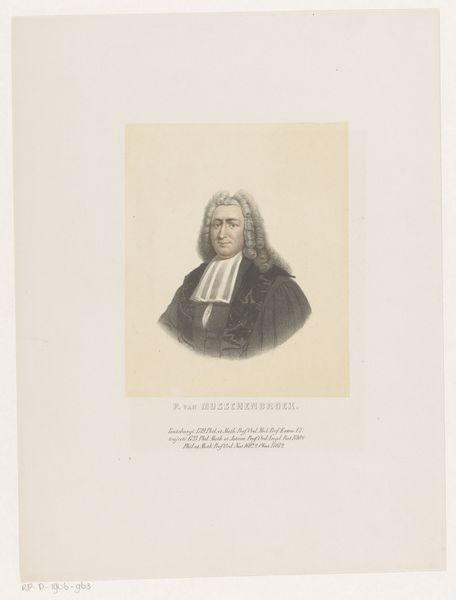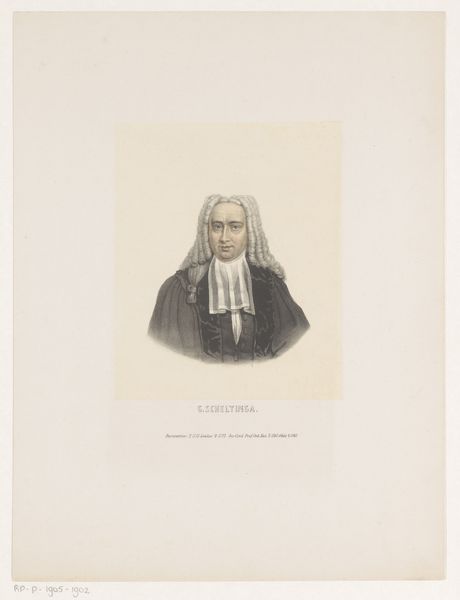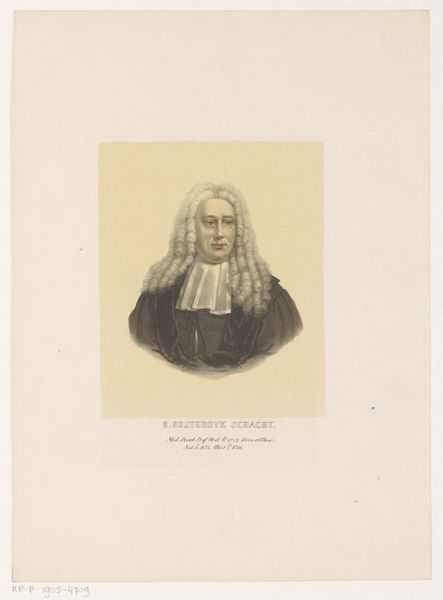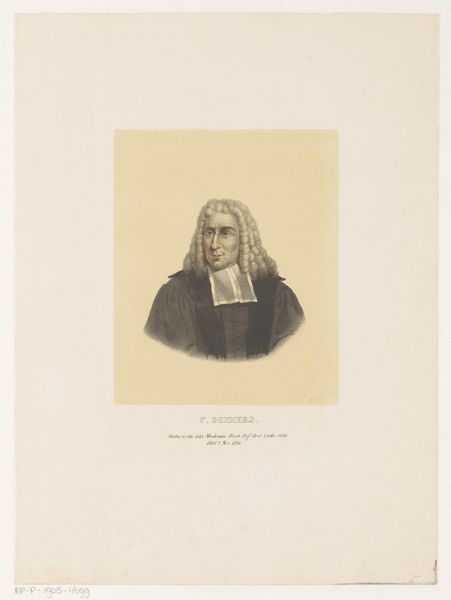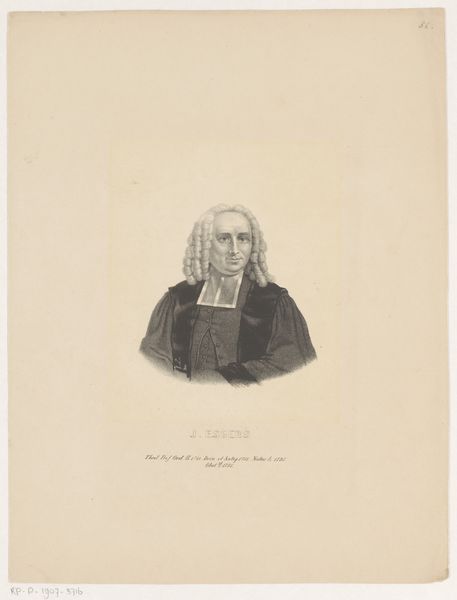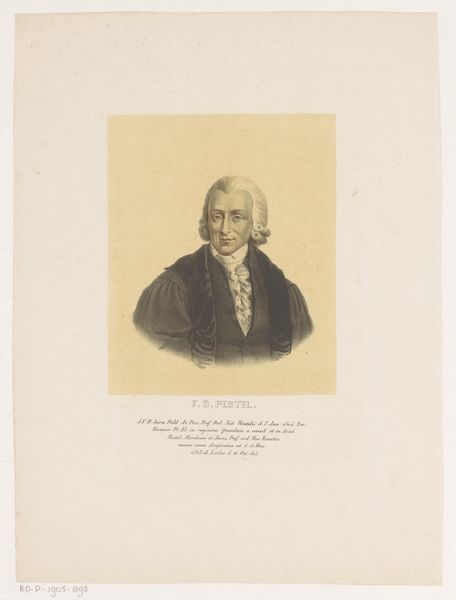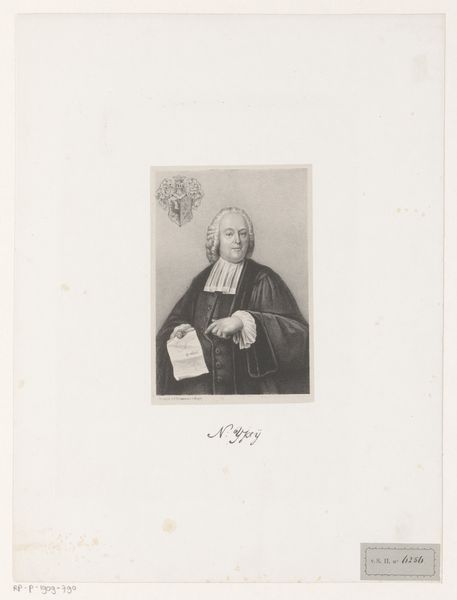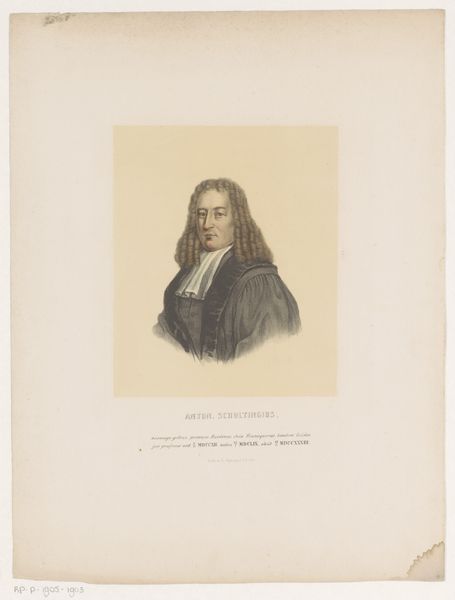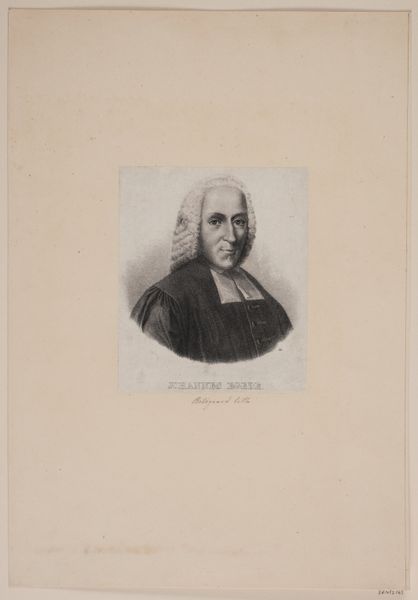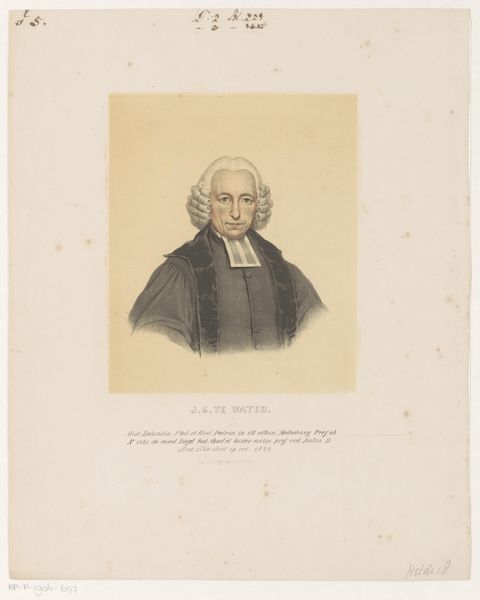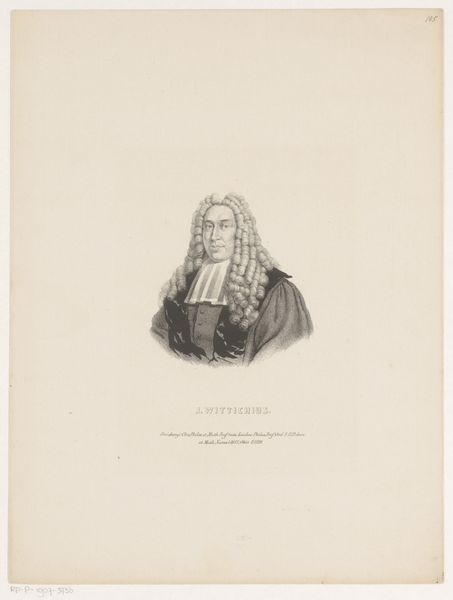
print, engraving
#
portrait
# print
#
history-painting
#
engraving
#
realism
#
monochrome
Dimensions: height 346 mm, width 254 mm
Copyright: Rijks Museum: Open Domain
Leendert Springer created this portrait of Bavius Voorda using lithography, a printmaking technique that democratized image production in the 19th century. Lithography involves drawing on a flat stone or metal plate with a greasy crayon, then treating the surface so that ink adheres only to the drawn areas. The resulting prints, like this one, possess a distinctive soft, tonal quality. While seemingly straightforward, lithography demanded skill. Springer would have needed a steady hand to capture the likeness of Voorda, paying attention to the subtle gradations of light and shadow that define his features and clothing. The wig is indicative of the time and status of the man. Consider the social context: the rise of lithography coincided with the Industrial Revolution and the growth of a consumer culture. Reproducible images became more accessible to a wider audience, fueling demand for portraits, illustrations, and advertisements. This portrait of Voorda exists within that history, reflecting both the ingenuity of the printmaking process and its connection to broader social and economic forces. It challenges us to consider how technological advancements shape our understanding and appreciation of art.
Comments
No comments
Be the first to comment and join the conversation on the ultimate creative platform.
